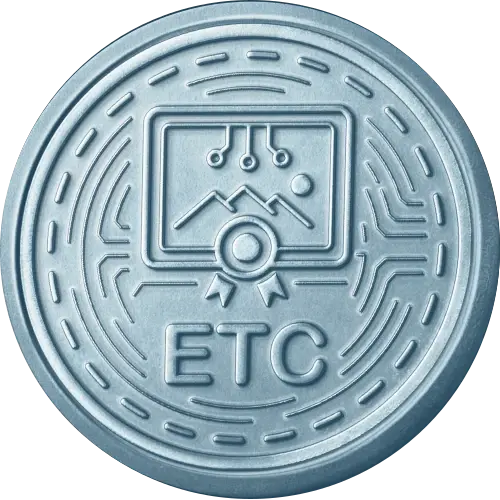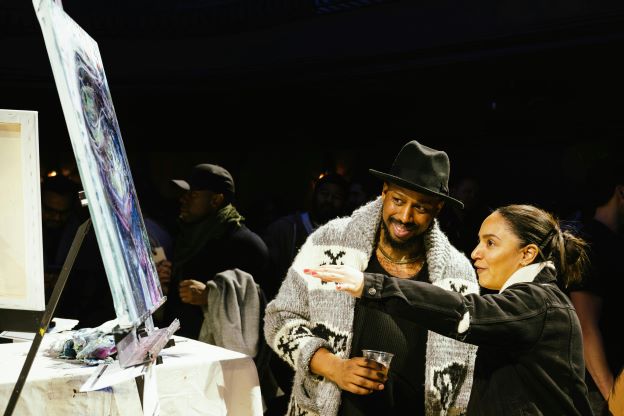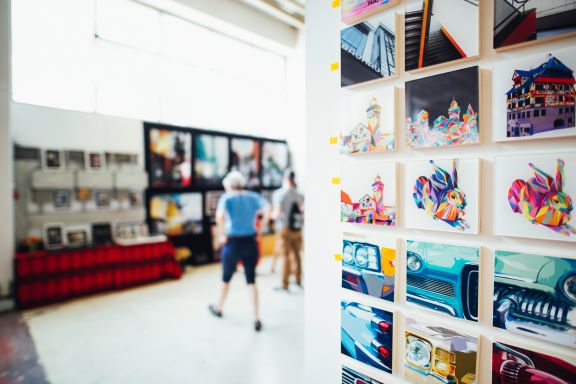For many in the art world, NFT (pronounced “nifty”) is a new term, but the concept has been around for some time in cryptocurrency culture. Lately, many ETChster users have been reaching out to get our thoughts on “The NFT Craze” and just a better understanding.
NFT = Non-Fungible Token
NFTs (or “non-fungible tokens”) are a special kind of cryptoasset in which each token is unique — as opposed to “fungible” assets like Bitcoin and dollar bills, which are all worth exactly the same amount. Because every NFT is unique, they can be used to authenticate ownership of digital assets like artworks, recordings, and virtual real estate or pets.*
*Coinbase: https://www.coinbase.com/learn/crypto-basics/what-are-nfts
Some of the more famous sales of NFTs are quite interesting:
- Jack Dorsey, founder of Twitter, created an NFT of the first Tweet and sold it for US$2.9M
- The National Basketball Association (NBA from the US) has started creating NFTs of “Top Shots.” A Lebron James dunk sold for $208,000.
- A digital artist who goes by Beeple sold a piece at Christie’s for $69M.
Many critics believe that significant speculation is largely behind the prices of these pieces. Investors are buying them hoping to then sell them as more speculators come into the market. Some critics point out that the benefit of ownership of the items is simply ownership itself. Anyone can read what Jack Dorsey’s first Tweet said, Lebron James’ dunk can we watched on YouTube, etc.
Time Magazine defined NFTs slightly differently: NFTs are best understood as computer files combined with proof of ownership and authenticity, like a deed.
Etchings provide that function for real-world objects, similarly to a deed. When a property is sold, an attorney typically studies public records (often found in government storage facilities) to determine who has owned the property in the past and whether or not a clear chain of ownership can be established ending with the current owner. Stated more simply, does the person offering a property for sale actually own it and thus have the right to sell it?
In the case of a piece of artwork, it wasn’t created by the colonization of land and then government-authorized subdivision; it was created by a person, its creator. Etchings track all owners and then transactions between them back to the creator, who is the object’s original owner. When you can trace the ownership of an object back to its creator, you have established authenticity.
Let’s look at the similarities and differences between Etchings and NFTs in more detail:
When you need to work with physical objects, ETChster has all the tools necessary for art collectors and artists.
Crypto NFT
Etching
Tracks
Digital Image & Video Files
Tangible Fine Art
Authenticity
Digital Art Easy to Clone Infinitely
Physical Art with ETC # Very Difficult to Fake
Ownership
Established by One-way Hyperlink
Bi-Directional
Description
Linked To
Embedded
Photos
No
Embedded
Documents
No
Embedded
Hidden Notes
No
Embedded
Day-to-Day Utility
No
Yes
Cost to Create
US$40-$200
Free
Creating an Etching
Creating a physical NFT (Etching) in ETChster is simple. The app walks you through your first one.
If you are a creator and your aim is to make sales, you can do some interesting things with your Etchings like affix the ETC # to the object. When you do this, anyone who comes across your work on public display can search that ETC # in Google or elsewhere and find the work, its story, your story, and the rest of your public etchings, which include your works for sale. For those unfamiliar with the concept of physical NFTs why not check out our introductory article “What Is a Physical NFT and How to Use It” to get caught up.
Transferring an Etching
When you sell an etched object, transferring the Etching to the new owner passes all of the history/story of that object to the new owner, which creates a wildly better buying experience. It also allows the new owner to prove that the new piece in their collection is authentic and that they own it. Consider reading our Art Collector’s Guide to better understand how authenticity and be proven and documented.

Creating History
When you create an Etching, you’re adding it to The Encyclopedia of Objects, a searchable database of the world’s unique objects. Future generations will be able to find these objects, their history, and connections to other great creations and their creators.
What’s Next?
Did you:
- Have follow-up questions?
- Have other related thoughts that might be beneficial to the community?
Post them in the comments!
Are You a Visual Artist?
Get the art catalog app and connected, maintenance-free website your art business deserves. Forever Free & Pro versions.
Are You an Art Collector?
You’ll have access to a marketplace of global artists and phenomenal tools to organize your art collection. Forever Free & Pro versions.
You Might Also Enjoy…

Elevating Your Profile: Harnessing the Power of Reviews for Artists

Amplifying Your Art’s Reach: Harnessing the Power of Physical Backlinks

Mastering the Art Sales Funnel: Transforming Strangers into Buyers


